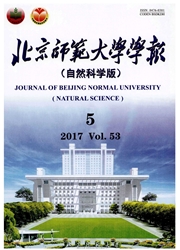

 中文摘要:
中文摘要:
以栽培川续断为研究对象,选择贵州省黔南州龙里县、贵定县的栽培基地为试验区,利用贵州省2010年全年的MODIS植被和温度产品,采用Ts-NDVI特征空间模型,先构建温度植被干旱指数(temperature-NDVIdrynessindex,TVDI),再通过TVDI与土壤水分的经验关系,反演得到试验区的土壤水分分布图.利用时间序列分析,得到了试验区土壤水分的年内变化特征.从总体上看,从春末到秋初,栽培区的土壤水分比较稳定,变化相对其他时段较小.初春时节,土壤含水量最低.进入秋季后,土壤含水量变化剧烈.在冬季,土壤水分则是先上升后下降,且变化幅度最大.此外,将遥感反演结果与同一时段的两次实地测定的土壤水分进行对比验证,发现遥感反演的结果与实测值较接近.研究结果表明利用本文的方法监测中药材栽培区的土壤水分含量切实可行.
 英文摘要:
英文摘要:
Soil moisture is an important environmental factor affecting the growth of Chinese herbal plants. This paper tries to use remote sensing to monitore soil moisture for cultivated Dipsacus asperoides in two cultivation bases in Longli and Guiding counties in Qiannan city, Guizhou province. MODIS vegetation and temperature data for Guizhou in 2010 were fed into model of Ts-NDVI feature space to construct Temperature- NDVI Dryness Index (TVDI). Soil moisture was retrieved using empirical relationship between TVDI and soil moisture. Time series analysis was used, change pattern in soil moisture was then analyzed. Early spring was found to have the lowest soil moisture. From late spring to early autumn, soil moisture was found to be relatively stable compared with other periods. In late autumn, soil moisture was found to start to change dramatically. When winter starts, soil moisture increases initially then decreases, with the largest fluctuations. After testing and verifying two remote sensing inversions with true soil moisture data of the same time period, ideal results showed that the present approach was practicable in monitoring soil moisture for Chinese herbal medicine.
 同期刊论文项目
同期刊论文项目
 同项目期刊论文
同项目期刊论文
 期刊信息
期刊信息
